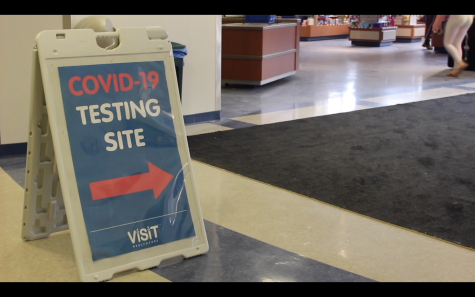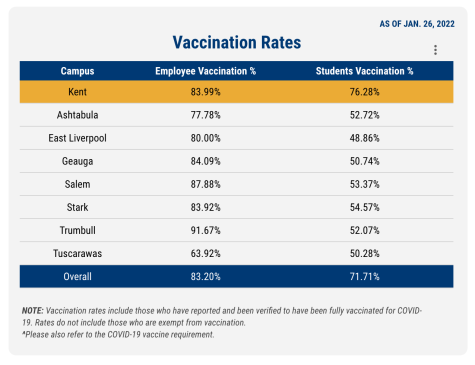Masks go from medical safety to fashion statements
A floral mask designed by senior fashion merchandising major Grace McLain. More masks are featured on her Instagram, @gksdesign, where she sells them to raise money for her senior collection. Photo courtesy of Grace McLain.
October 22, 2020
Wearing masks is the new norm, and it’s turned into a movement, culture and a fashion statement in less than six months. There are a multitude of different masks offered: with filters, without filters, different patterns and fabrics, as well as disposable and reusable masks.
When it comes down to specifics, there’s the N95 mask, mostly worn by healthcare professionals. These masks are made to filter out 95 percent of airborne particles, but the Center for Disease Control and Prevention (CDC) doesn’t recommend the general public to wear these so there is a larger supply for healthcare workers.
The CDC suggests wearing a mask with two or more layers for the most protection. Wear it over the mouth and nose and secure it under the chin. Make sure that the fabric is wearable and washable, as well as fitting snugly against the face without gaps.
Senior fashion design major Grace McLain has her own fashion line as well as making and selling masks to raise money for her senior BFA collection. McLain is also the co-president of Kent’s Fashion Student Organization (FSO), as well as the social media manager for Drawn2Style.
“I needed to find different ways to raise money for my senior collection, but also because there was definitely a huge need for masks,” McLain said. “Since a lot of people know that I sew, they were asking if I could make them [masks] before I had even started selling on my Instagram. It was mostly demand and also funds for my senior collection.”
McLain’s fashion Instagram account, @gksbydesign, features clothing, outfit collections, masks and more. She said she appreciates that masks can also help elevate an outfit.
“Since I make my own masks I can go to Jo-Ann’s and pick out any sort of fabric I think matches my aesthetic and my clothing that I have,” McLain said. “It can be a real accent piece to an outfit or pull something together, if I wear pink shoes and a pink mask, but a black outfit, everything kind of coordinates better that way.”
Associate fashion design professor Sue Yoder said that while masks are a continuing trend, it’s important to focus on the functionality of the masks themselves.
“There are different approaches to the design and production of masks,” Yoder said. “If you’re just developing cloth masks, you can be intentional about using some of the leftover fabric from creating a garment. And of course cloth masks can be reused. I also expect a lot of experimentation and invention when it comes to new materials, craft and fabrication techniques.”
Tamara Cullen, part-time fashion design and merchandising professor, said that the best way to use masks in a way to support the fashion industry and sustainability is to use reusable masks.
“I think if they’re made in a way that they’re not wasting fabric, I think that is safer but they make them so inexpensive that they can be disposed of or thought of as disposable is the wrong way to go about it,” Cullen said. “I’ve been seeing a lot of that, you can see masks in the street, in the garbage cans and I understand that it’s cheaper to do that and you make millions of them but we’re filling up trash cans with them.”
Although mass-producing is cheaper and easier for people to get their hands on during a pandemic, it is not the best option in the long haul.
“I understand we’re going through the pandemic so maybe sometimes people feel that putting sustainability on hold so we can survive and be able to do it later is a good idea but I question that,” Cullen said. “I feel that cloth masks are the way to go because you can just wash them. I really don’t like the idea of throwing them away and all of the plastic that’s being used and everything, it’s just going in the trash can.”
Kaitlyn Finchler is the photo editor. Contact her at [email protected].
SUPPORT STUDENT MEDIA
Hi, I’m Lauren Sasala, a senior journalism student from Toledo. I’m also the editor in chief of The Kent Stater and KentWired this semester. My staff and I are committed to bringing you the most important news about Kent State and the Kent community. We are full-time students and hard-working journalists. While we get support from the student media fee and earned revenue such as advertising, both of those continue to decline. Your generous gift of any amount will help enhance our student experience as we grow into working professionals. Please go here to donate.


















